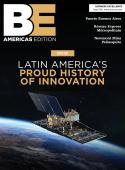Realizing a vision┬áAs Keith Regan learns, Urban Landmarks and Carma DevelopersÔÇÖ Aurora project in downtown Edmonton is a labor of love and a result of a passion for creating a sense of community in any setting. Carma Developers has a long track record of conceiving and creating planned residential communities in the United States and Canada, with a 50-year track record of projects that blend housing and amenities in cities such as Austin, Texas; Vancouver, British Columbia; and Denver, Colorado. CarmaÔÇÖs developments are mainly in suburban rings around major cities. Similarly, Urban Landmarks, a division of the Landmark Group, has been producing high-quality multifamily products in the Edmonton area for decades.For Calgary-based Carma, which began developing land in 1958, its project in downtown Edmonton called Aurora, City of Light, is something of a departure from its usual project profile. ItÔÇÖs also a result of the passion of a former company senior vice president who wanted to bring the same sense of community to the urban core that Carma usually brings to the suburbs, says project manager Jason Rumer. The concept of Aurora began with former Carma SVP Doug Kelly, who assembled several parcels in a developing neighborhood near downtown and set out to flesh out a vision of a vibrant residential and mixed-use community that also features amenities such as open-space parks. ÔÇ£Doug was an active part of the downtown community, and he was passionate about bringing something unique and innovative to the downtown core,ÔÇØ Rumer says. CarmaÔÇÖs development philosophy is to build in the path of growth, and Edmonton has been booming thanks to the rush to explore the nearby oil sands and other natural resources. ÔÇ£For Carma, this isnÔÇÖt just a profit-making venture,ÔÇØ Rumer adds. ÔÇ£ItÔÇÖs really a labor of love for the company as well.ÔÇØ The original height restrictions for the area only allowed for a maximum height of 15 stories. As a result, the original plan led to a large number of buildings clustered around each other, with little opportunity for mixed uses and open space. Not satisfied, Kelly sought the guidance of Reza Nasseri, CEO of the Landmark Group. Nasseri, an equally passionate Edmontonian, suggested bringing their own proposal for the land to Carma. This concept, borrowed from award-winning developments in the Vancouver area, would incorporate fewer but taller buildings to allow room for park space and other amenities and challenge the previous zoning that limited heights. Urban Landmarks then engaged architect Fraser Brinsmead to transform their vision in a design concept. After developing the design concept that was later named Aurora, Urban Landmarks presented it to Carma. It required Carma to allocate the entire parcel to this large project and not sell the land in pieces. Although this meant that Carma wouldnÔÇÖt be able to realize any return on its substantial investment in the land for some time, managementÔÇÖs foresight and passion for this unique project overcame the desire for a quick financial return, and they decided to go ahead with the concept. This was just the beginning. From there on it was Carma, Urban Landmarks, Fraser Brinsmead and many consultants as a team that had to overcome numerous obstacles in order to rezone and seek permission for the extra height required. ÔÇ£The tenacity and single-mindedness of Doug Kelly and then his assistant Jason Rumer on CarmaÔÇÖs side and Chunning Chen, president of Urban Landmarks, in pushing the rezoning process was a major factor in getting the rezoning approved,ÔÇØ says Nasseri.┬áMaking the vision for Aurora a reality took some creative designing and some good old-fashioned politicking. Kelly assembled the six-acre parcel over a five-year period and also worked to convince the city to sell him a roadway through the site, promising to keep the road open in the future. Nasseri, Kelly, Rumer and Chunning worked together to see the zoning change to make the project feasible and eventually green-lighted a change that enabled the allowable density to stay the sameÔÇöup to 200 units per acreÔÇöwhile also allowing taller towers to be built. The additional height allowed more than an acre of open space to be set aside for a park. The zoning change enabled the plan to call for a variety of building heightsÔÇöincluding five towers between 17 and 28 stories tall, four two-story buildings and one eight-story building. The taller buildings also mean the structures can be narrower, minimizing the shadow and view-shed impactsÔÇötypical concerns about building higher in urban settings. Rumer says designers and architects from Fraser Brinsmead were instrumental in laying out the overall design, which enabled open space to be preserved and the site to be aesthetically pleasing, with strategic exterior lighting meant to reflect the notion that the project is a ÔÇ£beacon of lightÔÇØ in the area.Fraser Brinsmead also designed the first tower and low-rise buildings on the site for Urban Landmarks. Although the economics of the project didnÔÇÖt support seeking full accreditation of the buildings from the LEED program of the Green Building Council, sustainable elements are being woven into the project wherever possible, which Rumer believes will help appeal to the audiences the project will be marketed to, including young professionals and empty-nesters. Although Edmonton remains in growth mode overall, the housing market has not been immune to the overall slowdown in North America, and Aurora may take longer to build out than originally planned. ÔÇ£WeÔÇÖve always expected it to be a five to ten year project, and during design I would have guessed it would be at the lower end of that range,ÔÇØ says Rumer. ÔÇ£Now the market is a bit of a question mark, so it might take a bit longer. But everyone believes the demand for the project remains strong in the long run.ÔÇØThe project also has an urban renewal flair to it, with the blocks where Aurora will rise largely undeveloped and seen as off-limits to many who visit downtown infrequently. ÔÇ£ItÔÇÖs a neighborhood thatÔÇÖs always been a bit off the track of downtown, but thatÔÇÖs changing,ÔÇØ Rumer notes. Some 2,400 people living on the Aurora site will help bring vitality to the area, which is also seeing additional development, including a new rail station nearby, a planned high-rise office building and expansion by the nearby Grant MacEwan College. ÔÇ£The fact that the project continues to move forward and is now in the marketing stages even in this market speaks to the energy behind the vision and the commitment to making it a reality,ÔÇØ Rumer adds. ┬á









